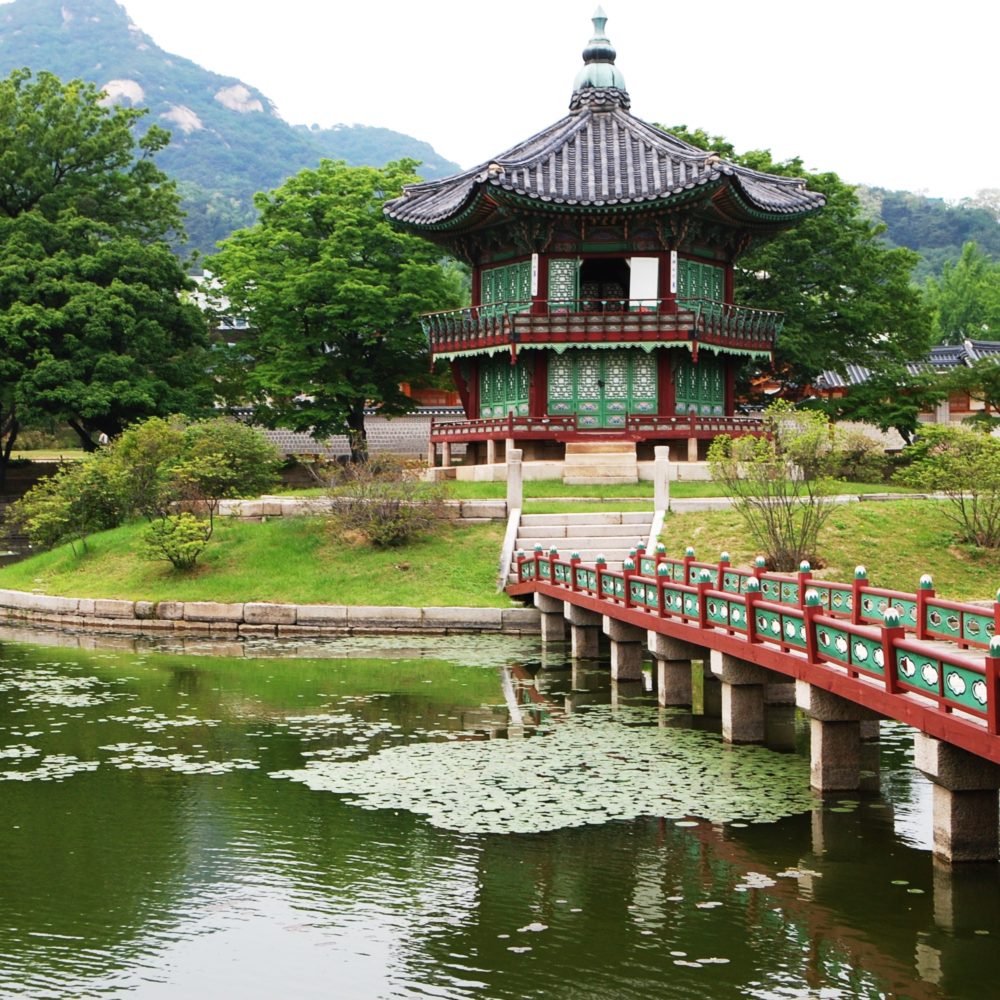I didn’t know what to expect before arriving in Korea.
Unlike most of the 80+ destinations I’ve filmed for television shows, Korea was new to me. On the trip across the Pacific, I thought of Samsung, KIAs, and other multi-national companies that began in South Korea. And, of course, I thought of North Korea and the uneasy peace between the two parts of a nation that had been united for 1,300 years until the Korean War.
In fact, about two months before the crew and I arrived in Seoul, a South Korean naval vessel was sunk by an explosion in the Yellow Sea; 46 sailors died. A month before we landed, an international investigation determined the ship had been sunk by a North Korean torpedo. Tensions were particularly high in South Korea—at least according to the Western press–and more than a few of my American friends questioned the wisdom of my visiting South Korea.
Surprisingly, I found little concern among the many Koreans with whom I spoke. They seemed resigned to years of political wrangling, tough talk, and occasional military flare ups. They also seemed much too busy to engage in protracted conversation about what might happen next or if and when reunification of Korea might occur.
What are Koreans busy doing? In the big city of Seoul—a city of 24 million residents—it’s working and eating. As in so many other Asian cities, eating is a major pastime with glorious markets, pocket-sized restaurants, and mega-food malls catering to what seems to be an around-the-clock appetite on the part of the locals. A standard Korean greeting is, “Have you eaten rice?”
The modernity of Seoul surprised me. With a clean and efficient subway system, shiny taxicabs, and wide avenues (in the newer parts of the city), Seoul hums with the energy of a beehive. The crew and I stayed at the ultra-modern Park Hyatt Seoul, as cosmopolitan a hotel as you’d find anywhere. It’s a “perched hotel” atop an office building, and its rooms feature stunning bathrooms with showers that seemed carved from stone. An infinity pool with city views offers guests respite from the urban crush, and the hotel’s breakfast buffet is an elegant spread of both Western and Eastern dishes.
When it comes to work, the economic success South Korea has achieved in rebuilding since the Korean War speaks for itself. Americans may have snickered when the first KIA or Hyundai arrived in the US, but Koreans learn fast, and today their cars are more than competitive with rivals from Japan, Germany, and the US.
“Made in Korea” no longer signifies trinkets; think, instead, of LG kitchen products, Samsung flat-screen TVs, and a host of other sophisticated items sold worldwide. Korea has achieved nothing less than an economic miracle that’s made it the world’s 15th largest economy in a very short time. Koreans attribute that success to a national sense of unity and purpose. (A five-day work week was only instituted in Korea in 2004.)
It’s an efficient place. If your Seoul taxi driver doesn’t speak English, there’s a number you may dial to reach an English-speaking operator. Explain where you’re going, and the operator translates that for your driver. Slide into a seat at a barbeque restaurant—Korean barbeque is not to be missed—and a discrete button on the table can be used to summon your waiter to keep things moving along.
On our way to visit several Buddhist monasteries in the Korean countryside, I was struck by the rest stops along the highways. You can dine on fried squid, step into an office center and use a computer and Wi-Fi at no charge, buy everything from CDs to camping equipment, and (at some rest stops) take a few swings at a batting cage to work out the kinks of driving.
The crew and I were hosted to lunch at one spectacular monastery tucked into the green hills of the Sobaek Mountain Range. The Guinsa Temple houses hundreds of monks, and visitors are welcome to stay overnight. But be warned: You’ll be required to awake early with the monks. And, as we learned at lunch, you’re expected to consume every grain of rice—and I mean every grain—at meals. Wasting food is severely frowned upon.
And speaking of food, the national dish is Kimchi, a dish of fermented vegetables with a rainbow of seasonings. There are hundreds of variety so kimch that may be made with cabbage, radishes, onions, and cucumbers. Korean soften eat kimchi at every meal, and affluent homes have a separate refrigerator for kimchi due to its strong smell.
And don’t miss the red bean pastries and bibimbap (“Buh-beem-bahp”), for my money, the best dish in the country. Consisting of more than 20 ingredients, bibimbap is a big bowl of warm, white rice topped with raw beef, sautéed or seasoned vegetables, a raw or fried egg, chili pepper and more. The colors alone make the dish gorgeous, and when mixed together, you have an entire, delicious meal in one bowl. The city of Jeonju is famous for its version of bibimbap, and you’ll see it being served to me there in the Korea episode.
I found Koreans to be exceedingly polite and helpful. Their respect for their elders was quite surprising to me. Not that I don’t respect my elders (though I’m something of an elder myself), but in Korea, even a brother a year younger than his sister will call her “aunt” rather than by her first name. Upon meeting, Koreans quickly establish who is older than whom and tailor their speech accordingly; no matter how long I might have known someone, if they’re younger than I am, he or she would call me “uncle” rather than “Rudy.”
Getting around Korea is easy, with well-marked roads and cities, though you can’t always count on someone speaking English. But I’d recommend getting out of Seoul to see some of the monasteries in the countryside. Don’t miss the Haeinsa Temple in the lovely Gayasan National Park (about an hour west of Daegu).
Founded in the ninth century, Haeinsa Temple is one of the “Three Jewel Temples of Korea” and houses the Tripitaka Koreana, 80,000 volumes of instructions for monks and the teaching of Buddha carved by hand on birch wood. The first set, completed in 1087, was burnt in a Mongol invasion. The current set, held on long rows of shelving you may view through wood slats, was carved a second time in 1251. The site is a World Heritage Site, and for good reason.
By the time our week-long shoot in Korea was over, I’d become a fan of the country. I’d happily go just for the food, but I’d stay for the people, architecture, and history.







